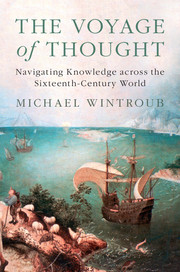Book contents
- The Voyage of Thought
- The Voyage of Thought
- Copyright page
- Contents
- Figures
- Acknowledgments
- Introduction
- 1 Information: Pilgrimage in a Church of Poems
- 2 Expertise: The Heavens Inscribed
- 3 Translation: Translating the Body of Thought
- 4 Scale: The Heart of the Matter
- 5 Confidence: A Balance of Trust
- 6 Replication: Replicating a Thought
- Epilogue: Pirate Epistemologies
- Bibliography
- Index
- References
Bibliography
Published online by Cambridge University Press: 13 July 2017
- The Voyage of Thought
- The Voyage of Thought
- Copyright page
- Contents
- Figures
- Acknowledgments
- Introduction
- 1 Information: Pilgrimage in a Church of Poems
- 2 Expertise: The Heavens Inscribed
- 3 Translation: Translating the Body of Thought
- 4 Scale: The Heart of the Matter
- 5 Confidence: A Balance of Trust
- 6 Replication: Replicating a Thought
- Epilogue: Pirate Epistemologies
- Bibliography
- Index
- References
- Type
- Chapter
- Information
- The Voyage of ThoughtNavigating Knowledge across the Sixteenth-Century World, pp. 264 - 282Publisher: Cambridge University PressPrint publication year: 2017



